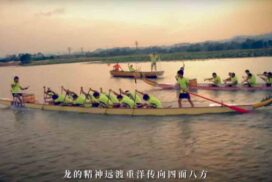C ultural development is synonymous with the enhancement of societal norms and values. It is imperative for individuals to safeguard the rich traditions and customs encompassing both physical behaviours and refined mindsets. This includes fostering empathy, establishing modern societies, advancing civilization, and nurturing an appreciation for developing cultures and fine arts across various eras, all guided by the wisdom of religions and customs.
Myanmar, as a melting pot of diverse ethnicities, has consistently upheld cultural heritages, embracing the multifaceted traditions of its various ethnic groups. These cultural legacies, both tangible and intangible, span across different nations and communities. Intangible culture encompasses languages, ideas, customs, traditions, faiths, costumes, handicrafts, fine arts, and more, while tangible culture involves all the materials created and handled by humans.
The responsibility falls upon the shoulders of all Myanmar citizens to preserve these tangible and intangible cultural properties, driven by national awareness and a sense of duty for their enduring existence. The preservation of these cultural aspects not only uplifts the prestige and integrity of the nation but also enhances its standing among global countries.
The Pyu ancient cities, including Halin, Beikthano, and Sri Ksetra, situated in the expansive irrigated landscapes of the Ayeyawady River basin, must be protected for future generations. Additionally, wooden monasteries like Pakhangyi, Pakhannge, Lekaing, Sagu, and Shwekyaung in Mandalay, natural sites such as Pyadalin Cave and Sadan Cave, and ancient cities like Inwa, Amarapura, Sagaing, Mingun, Mandalay Nanmyo, MraukU, Inlay Lake, Bago, and Hanthawady are vital components of Myanmar’s cultural tapestry. Not to mention, the Khakaborazi landscape, wildlife sanctuaries, Myeik Archipelago, Pontaung-Ponnya anthropoid primates palaeontological sites, Shwedagon Pagoda, Maha Muni Buddha Image, and other significant religious edifices play crucial roles in preserving the nation’s cultural identity.
While three ancient Pyu city-states have already secured recognition as World Heritage Sites, efforts are underway to include the MraukU cultural heritage zone in the prestigious list. Preserving tangible and intangible cultures not only aids in the propagation of religions but also contributes to nurturing the youth with the five strengths of capacity.
The fading of traditional culture poses a threat to the existence of lineages and races. Therefore, the preservation of Myanmar’s cultural heritage must align with international rules and standards. As Myanmar’s cultural heritage aligns with that of the world, every individual citizen bears the responsibility to protect and pass on the tangible and intangible cultural properties of Myanmar’s ancestors to future generations.
Preserve Myanmar’s rich cultural heritage for posterity
- February 19, 2024
- 313














